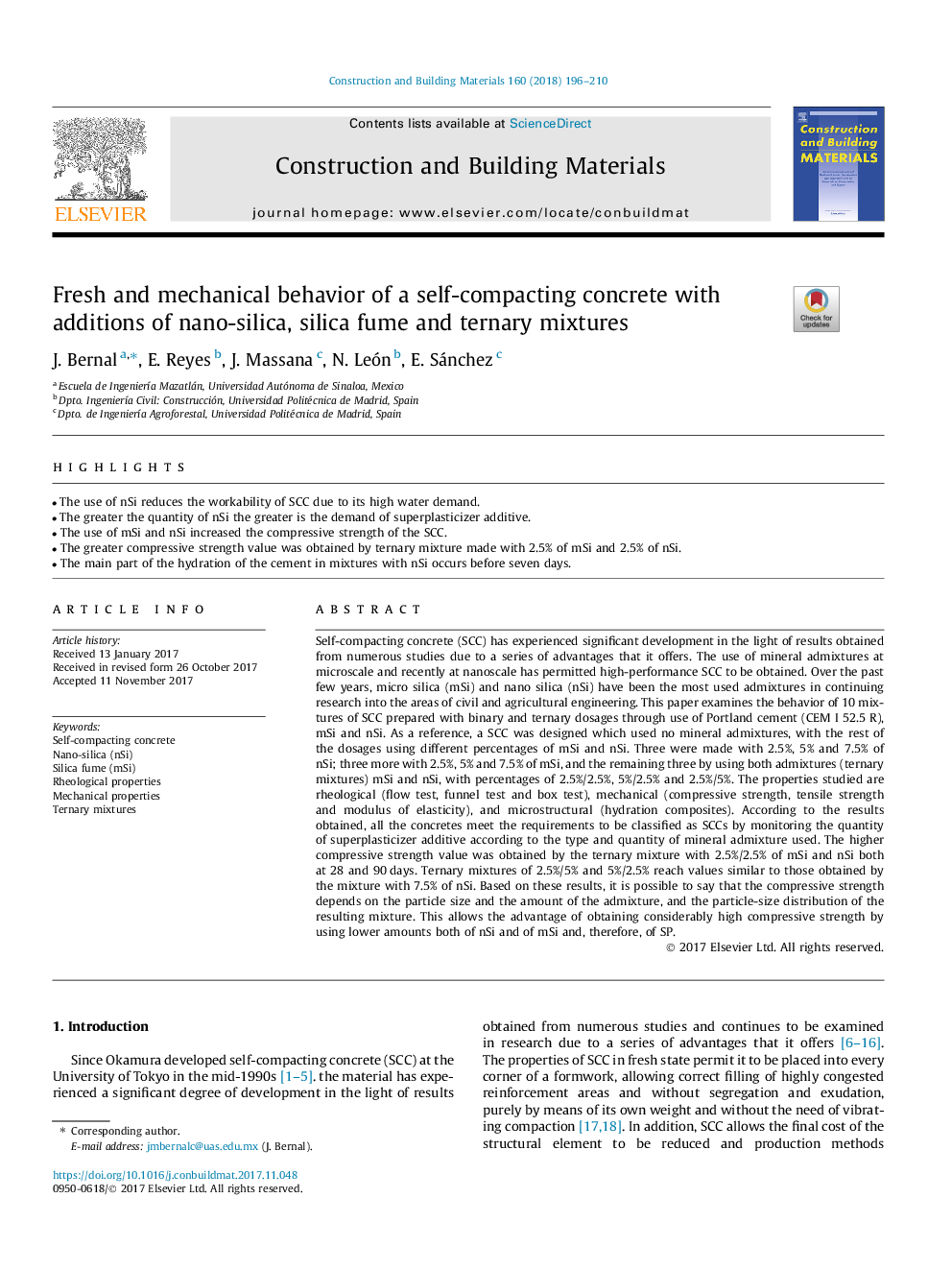| کد مقاله | کد نشریه | سال انتشار | مقاله انگلیسی | نسخه تمام متن |
|---|---|---|---|---|
| 6716973 | 1428746 | 2018 | 15 صفحه PDF | دانلود رایگان |
عنوان انگلیسی مقاله ISI
Fresh and mechanical behavior of a self-compacting concrete with additions of nano-silica, silica fume and ternary mixtures
ترجمه فارسی عنوان
رفتار تازه و مکانیکی یک بتن خود تراکم با افزودن نانو سیلیکا، سیلیسیم دیگ و مخلوط های سه تایی
دانلود مقاله + سفارش ترجمه
دانلود مقاله ISI انگلیسی
رایگان برای ایرانیان
کلمات کلیدی
موضوعات مرتبط
مهندسی و علوم پایه
سایر رشته های مهندسی
مهندسی عمران و سازه
چکیده انگلیسی
Self-compacting concrete (SCC) has experienced significant development in the light of results obtained from numerous studies due to a series of advantages that it offers. The use of mineral admixtures at microscale and recently at nanoscale has permitted high-performance SCC to be obtained. Over the past few years, micro silica (mSi) and nano silica (nSi) have been the most used admixtures in continuing research into the areas of civil and agricultural engineering. This paper examines the behavior of 10 mixtures of SCC prepared with binary and ternary dosages through use of Portland cement (CEM I 52.5 R), mSi and nSi. As a reference, a SCC was designed which used no mineral admixtures, with the rest of the dosages using different percentages of mSi and nSi. Three were made with 2.5%, 5% and 7.5% of nSi; three more with 2.5%, 5% and 7.5% of mSi, and the remaining three by using both admixtures (ternary mixtures) mSi and nSi, with percentages of 2.5%/2.5%, 5%/2.5% and 2.5%/5%. The properties studied are rheological (flow test, funnel test and box test), mechanical (compressive strength, tensile strength and modulus of elasticity), and microstructural (hydration composites). According to the results obtained, all the concretes meet the requirements to be classified as SCCs by monitoring the quantity of superplasticizer additive according to the type and quantity of mineral admixture used. The higher compressive strength value was obtained by the ternary mixture with 2.5%/2.5% of mSi and nSi both at 28 and 90â¯days. Ternary mixtures of 2.5%/5% and 5%/2.5% reach values similar to those obtained by the mixture with 7.5% of nSi. Based on these results, it is possible to say that the compressive strength depends on the particle size and the amount of the admixture, and the particle-size distribution of the resulting mixture. This allows the advantage of obtaining considerably high compressive strength by using lower amounts both of nSi and of mSi and, therefore, of SP.
ناشر
Database: Elsevier - ScienceDirect (ساینس دایرکت)
Journal: Construction and Building Materials - Volume 160, 30 January 2018, Pages 196-210
Journal: Construction and Building Materials - Volume 160, 30 January 2018, Pages 196-210
نویسندگان
J. Bernal, E. Reyes, J. Massana, N. León, E. Sánchez,
